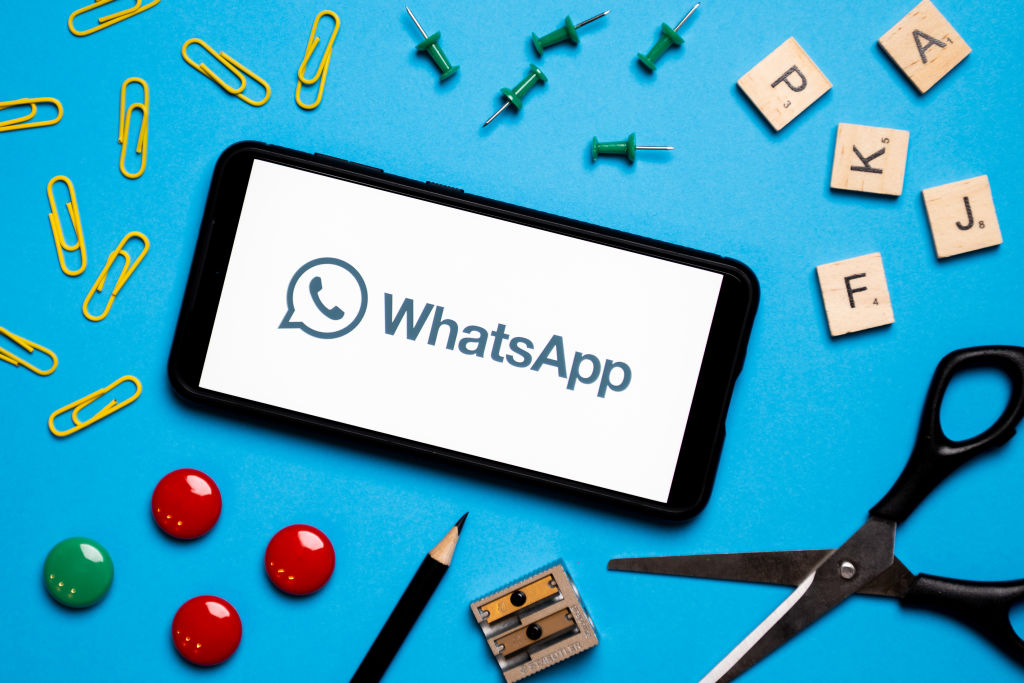Getting started with WhatsApp Channels for business
We were skepitcal at first, but it turns out WhatsApp Channels for business can be an effective tool for digital communications

When WhatsApp launched WhatsApp Channels in June 2023, many were skeptical whether the platform’s users would welcome yet another way to be contacted by brands and fed with information.
Fast forward six months and while the exact number of Channels set up so far in the UK is unknown, they appear to have been adopted far and wide.

Premier League football teams such as Spurs and Liverpool are on there, news organizations including the BBC and Financial Times have created theirs and major personalities like Meta’s Mark Zuckerberg are connecting with audiences new and old.
In September, WhatsApp announced WhatsApp Channels would be rolled out to more than 150 countries, with its ultimate goal being to “build the most private broadcast service available”. At launch, the company promised it would pave the way for admins to build a business around their channel using WhatsApp’s expanding payment services.
The use cases of WhatsApp Channels for business are clear and the platform could become a new and vital stage for audience-facing interactions at the enterprise level.
What is WhatsApp Channels and how is it different from WhatsApp?
WhatsApp Channels is a one-way broadcast tool where admins can send text, photos, videos, stickers, and polls to their audience of followers.
WhatsApp Channels differ substantially from individual WhatsApp accounts and can be found under the Updates tab. Users must opt into them proactively, but any business with a WhatsApp account can create one. The phone number and profile photo of admins won’t be shown to followers and the details of followers also are not visible to those within the same WhatsApp Channel.
Nicole Mezzasalma, a senior consultant for innovation at social experts Battenhall, believes this presents an opportunity for brands to “create a closer community” while also giving followers “the feeling of being insiders”.
She cites the Mercedes-AMG F1 team as a good example; it shares exclusive clips from the drivers alongside behind-the-scenes content to its 400,000+ followers. Elsewhere, Netflix – which has more than 26 million followers on its WhatsApp Channel – takes an “interesting approach”, suggests Mezzasalma, “adopting the role of an eccentric, slightly over-excited Gen Z friend and using approachable language”.
Sign up today and you will receive a free copy of our Future Focus 2025 report - the leading guidance on AI, cybersecurity and other IT challenges as per 700+ senior executives
Features of WhatsApp Channels for business
Built as a communications channel for businesses, WhatsApp Channels has received a host of new features since launching. It now has an enhanced directory for users to find channels to follow and these are automatically filtered based on their country. There is also the option to view new or most active channels, as well as those most popular based on followings.
WhatsApp only keeps Updates in WhatsApp Channels for 30 days before deleting them from its servers, which keeps activity fresh. And while users can’t engage with each other, Channels does support Reactions on posts using emojis while posts can be forwarded to friends with a link back to the channel so they can find out more.
Maria Opre, a cybersecurity expert and senior analyst at EarthWeb, says there has been a “growing affinity” towards WhatsApp Channels as the service “offers an intimate bridge to the consumer that emails or other platforms might not provide”.
Organizations looking to branch out with their digital marketing could use WhatsApp Channels as a direct path of communication for their audience. But Opre warns against overreliance on the platform: “There’s a tightrope walk between engagement and intrusion. Over-message, and you risk being labelled as spammy. My advice is treat your WhatsApp Channel like a conversation with a friend: meaningful, timely, and not overwhelmingly frequent.”
The limitations of WhatsApp Channels for business
Mezzasalma also has a warning for WhatsApp Channel admins when she raises the danger of repetition with other social platforms such as Facebook, Instagram, X and Threads.
“Brands that only use the same content are missing an opportunity to build their communities,” she explains. “As always with new platforms or features, testing and iterating is key, as is being true to your brand voice and personality.”
However, as a newbie in the social network field, WhatsApp Channels still understandably lags behind other offerings. Karim Salama, founder of web and digital marketing agency e-innovate highlights the current lack of the tools to target specific demographics.
But he adds: “The fact people who choose to follow you are private can make the platform appealing to some users who may not be on other platforms. This could mean WhatsApp will have a reach that’s not accessible through other forms.”
RELATED RESOURCE

Discover how you can reduce alert fatigue and provide support for lean IT teams
DOWNLOAD NOW
Harvey Morton, author of Succeeding as a Young Entrepreneur and founder of his own Sheffield-based digital agency, also raises the limitations of WhatsApp Channels. But he suggests understanding these from the start will ensure brands “set realistic expectations and develop strategies to overcome them”.
Unlike email marketing or other social media advertising, businesses cannot segment their audience, Morton adds, with messages “broadcasted to all followers, regardless of their specific interests or needs”. The lack of two-way communication is also an issue, he adds, explaining WhatsApp Channels relies on users actively checking the Updates tab. Notifications are muted by default but these can be turned on for each channel.
However, Morton does identify one major positive: cost-effectiveness. “Unlike traditional marketing channels, such as SMS or email, WhatsApp Channels do not incur additional charges for sending messages,” he notes.
“This makes it an attractive option for businesses of all sizes, allowing them to connect with their audience without breaking the bank.”
How to start the WhatsApp Channels journey
Organizations looking to set up their own WhatsApp Channel will need a WhatsApp Business account. The platform advises admins to ensure they have two-factor authentication (2FA) switched on for their account to enhance security of the Channel.
Opening one is easy:
- Click on the Channels icon.
- Click Create Channel, then follow the on-screen prompts.
Admins can always change the name if they wish and each Channel can be customized with icons and descriptions.

The new WhatsApp Channel can then be shared via a dedicated link found by clicking on the Channel name.
At present, unlike normal chats, WhatsApp Channels are not end-to-end encrypted. However, the platform is looking into use cases where this might be appropriate in the future such as within healthcare.
Reactions have been positive. On its blog, WhatsApp writes: “We’ve appreciated all the positive feedback from our initial start in 10 countries. This is just the beginning, and we’ll continue to add more features and expand Channels based on feedback we get from users”.
For Christoph Cemper, founder of AIPRM – an artificial intelligence (AI) prompt management platform for ChatGPT with almost two million users – the future looks bright for WhatsApp Channels. He cites the fact they are “intimate, direct and less crowded than other platforms” although he adds, “...for now anyway”.
Cemper explains: “The big appeal is that real one-on-one connection you get with customers. WhatsApp Channels can be powerful tools when used right, but it takes a mix of being relevant, injecting personality, and good timing to really connect in a meaningful way. Use them as just another broadcast lane and they lose their magic quickly.”
Jonathan Weinberg is a freelance journalist and writer who specialises in technology and business, with a particular interest in the social and economic impact on the future of work and wider society. His passion is for telling stories that show how technology and digital improves our lives for the better, while keeping one eye on the emerging security and privacy dangers. A former national newspaper technology, gadgets and gaming editor for a decade, Jonathan has been bylined in national, consumer and trade publications across print and online, in the UK and the US.

